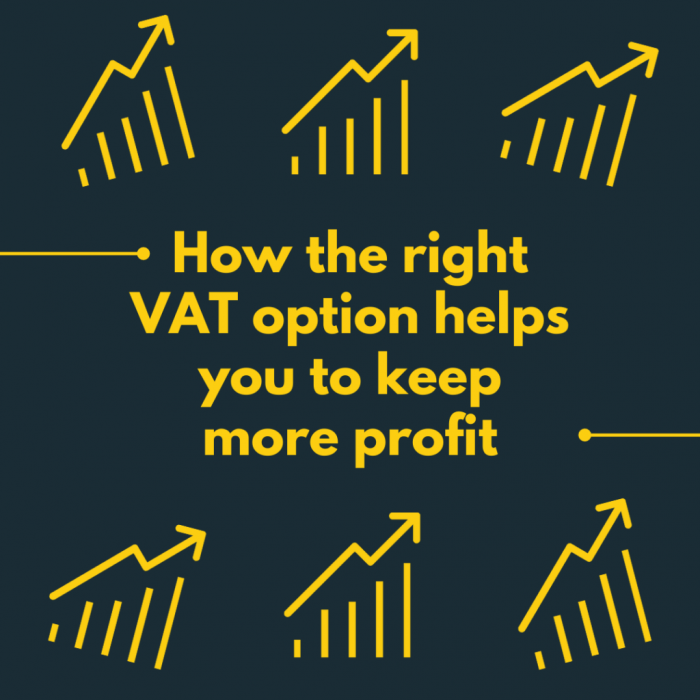Knowing which VAT options are available can help you to keep more profit. In this blog we explain how the right VAT option helps you to keep more profit.
So what is VAT and how can it help you keep more profit?
VAT (Value Added Tax) is a consumption tax which is calculated based on goods and services. It is a percentage added to the price of an item or service. VAT is an ‘indirect tax’ which is collected by businesses on the behalf of the Government.
I’m new to Amazon FBA, do I need to apply to pay VAT? Whether you pay VAT is based on how much you have turned over.
Businesses which turnover more than £85,000 must register and pay VAT and charge VAT on the products and services they sell. So if you have not yet reached a turnover of £85,000 you do not need to apply to pay VAT.
We recommend speaking to your accountant before making financial decisions.

Disclaimer: this applies to UK businesses specifically.
What VAT options are there and which one is right for you?
You can apply for VAT here. When applying for VAT for your FBA business we would suggest choosing the option ‘retailing not listed elsewhere’.
So what are the different types of VAT and how do they affect your business?
- VAT exemption – This rate applies if you are not VAT registered but have applied for exemption. The VAT for your fees will be £0.00.
- Standard Rate (20%) – If you are registered for the standard rate VAT scheme this will remove 20% from your purchase price. This will lead to VAT being removed from your Amazon Fees and add 20% VAT for sale.
- Flat Rate (7.5%) – This option is applicable to you if you have been on the flat rate scheme for less than a year. This option will add 7.5% VAT to your profit calculations.
- Flat Rate (8.5%) – This option is when you have been in a flat rate scheme for over a year. This will add 8.5.% VAT to your profit calculations.
With Flat Rate schemes you pay a percentage of your total sales to HRMC when filling out your VAT return.
To apply to the Flat Rate VAT scheme you will need to prove that your total estimate VATable sales for the next year is under £150,000. You need to wait until a year has passed before you apply for the flat rate if you have in the past.
If you decide to register for VAT you will need to fill in and submit VAT returns to HRMC on a quarterly basis (every 3 months). This is to ensure your business is VAT compliant and you are paying the correct amount of VAT.
You can submit a VAT return here.
An example of the different VAT options
Here is how the different types of VAT rates could affect your business when analysing potential deals.


Applying for VAT exemption for your FBA business.
Looking at the different VAT options it might be that applying for VAT exemption is the right VAT option to help you to keep more profit. In order to become VAT exempt it is important to contact Amazon via email. Below we have attached a template which you can edit to better fit your exemption request:
Dear Amazon team,
I am a UK resident with a private limited company selling in the UK marketplace. My company name is …… and I have attached a copy of my certification of incorporation. Our company has a turnover of less than the annual £85,000 threshold and therefore we are not VAT registered and do not have a VAT number.
From my understanding, our business should not be charged VAT on any Amazon selling fees. Therefore I would like to register our business as VAT exempt on Amazon.
Conclusion
We hope you have a better understanding of how the right VAT options helps you to keep more profit. It is important when organising VAT to speak with your accountant before making financial decisions.
If you would like to learn more about Profitl check out our website here! We also have our Youtube channel which you can find here.
Would you like to see more of our blogs? Check them out here.
